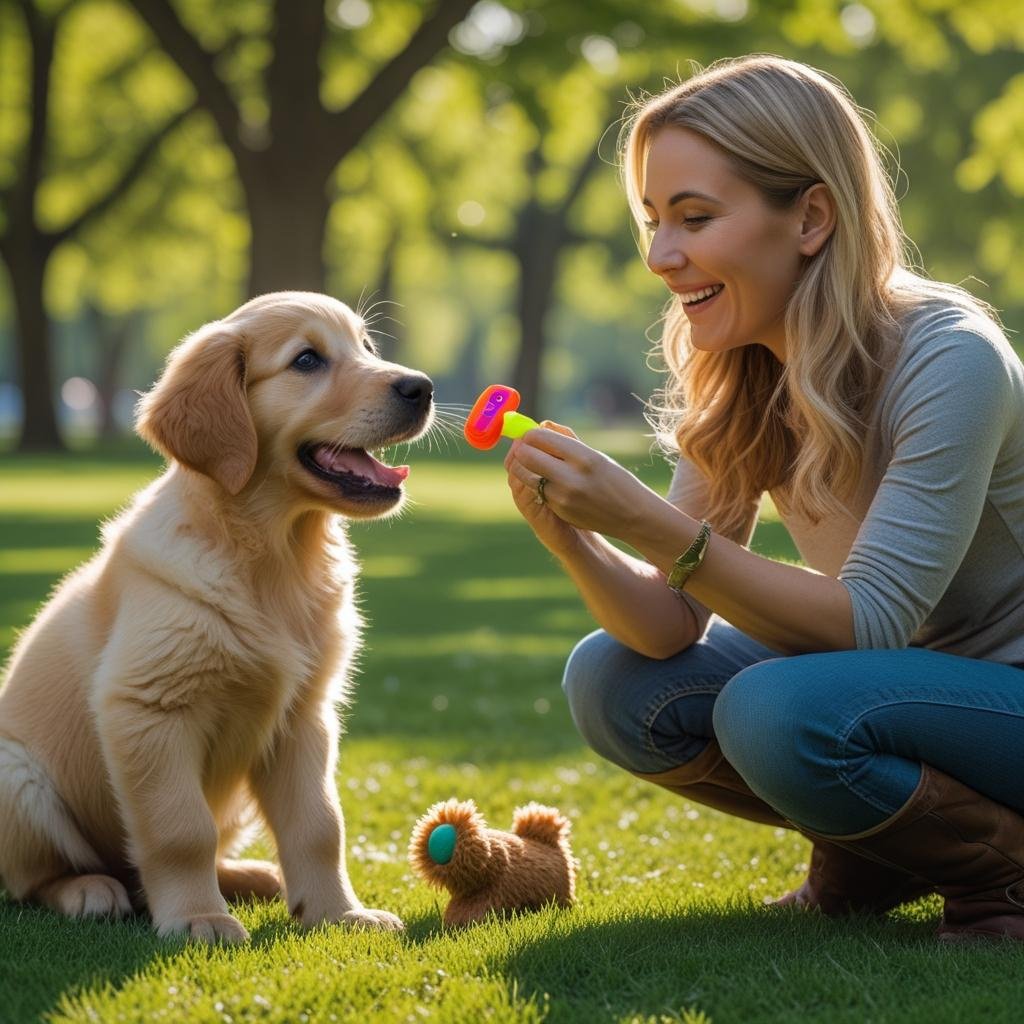
TRAINING YOUR DOG WITH POSITIVE REINFORCEMENT
Share
Tools And Techniques For Success
Hey fellow dog lovers! Let's talk about something near and dear to my heart: positive reinforcement dog training. Forget the outdated methods of scolding and punishment. We're diving into a world of treats, praise, and happy tail wags! I’ve been using positive reinforcement with my own goofy golden retriever, Max, for years, and let me tell you, the results are incredible. Not only does it create a stronger bond between you and your furry friend, but it also makes training a whole lot more fun for both of you.
The Power Of Positivity :
So, what exactly is positive reinforcement? Simply put, it's rewarding your dog when they do something you like. This encourages them to repeat that behavior. Think of it like this: you're teaching your dog what you want them to do, rather than just focusing on what you don't want them to do. Max, for example, used to jump on everyone who came to the door. Now, with a tasty treat and enthusiastic praise when he sits nicely, he's become a much more polite greeter! It takes patience, but the happy dances are worth it.
Essential Training Tools :
Treats :
- Small, high-value treats are your best friend. Think tiny pieces of cooked chicken, cheese, or commercially available training treats.
- Pro Tip: Variety is key! Keep your dog guessing to maintain their interest.
Clickers :
- A clicker makes a distinct sound that your dog will associate with positive reinforcement.
- It’s a great way to mark the exact moment your dog performs the desired behaviour.
Durable Toys :
- Toys can be used as rewards, especially for dogs who are more motivated by play than food.
- Think tug-of-war ropes, fetch balls, or puzzle toys.
Let's break these down :
Treats: These are your go-to motivators. I always carry a small bag of treats when I'm working on training with Max. When he nails a 'sit' or 'stay', he gets a tiny reward. Remember, size matters! You don't want to overfeed your pup.
Clickers: This little device is a game-changer. The click sound becomes synonymous with 'yes!' in your dog's mind. Click the instant your dog performs the desired behavior, then immediately follow with a treat. Max picked up on this super quickly, and now he gets visibly excited when he hears the click.
Durable Toys: Some dogs are more toy-motivated than food-motivated. A good game of fetch or tug-of-war can be a powerful reward. Make sure the toys are durable and safe for your dog to play with. I always supervise Max when he's playing with toys to prevent him from swallowing any small parts.
Practical Training Techniques :
Here are a few basic commands to get you started :
- Sit: Hold a treat near your dog’s nose and move it slightly upwards and backwards over their head. As their head goes up, their rear end should naturally lower into a sit. Say “Sit” as they perform the action and reward them with the treat and praise.
- Stay: Have your dog sit. Hold your hand up in a “stop” gesture and say “stay” . Start with short durations (a few seconds) and gradually increase the time. Reward them for staying put.
- Come: Use a cheerful tone and say “come!” as you gently tug on the leash (if you're using one). When your dog comes to you, shower them with praise and a treat.
Remember: Keep training sessions short and sweet (5-10 minutes) to avoid overwhelming your dog. End each session on a positive note. Consistency is key! Practice these commands regularly in different environments.
Making Training Fun :
The most important thing is to make training an enjoyable experience for both you and your dog. Keep it lighthearted, use plenty of praise, and celebrate even the smallest victories. If you're feeling frustrated, take a break and come back to it later. Positive reinforcement is all about building a strong, loving bond with your furry companion. So grab those treats, click that clicker, and get ready for some tail-wagging fun!
Wrapping Up :
In this blog post, we’ve explored the fundamentals of positive reinforcement dog training and armed you with the knowledge of essential tools and techniques for success. By using treats, clickers, and durable toys, you can motivate and reward your dog, making the training process enjoyable and effective. Remember that consistency, patience, and a positive attitude are key to creating a strong bond with your dog while achieving your training goals. So, go ahead and implement these strategies, and watch as your furry friend transforms into a well-behaved and happy companion.
